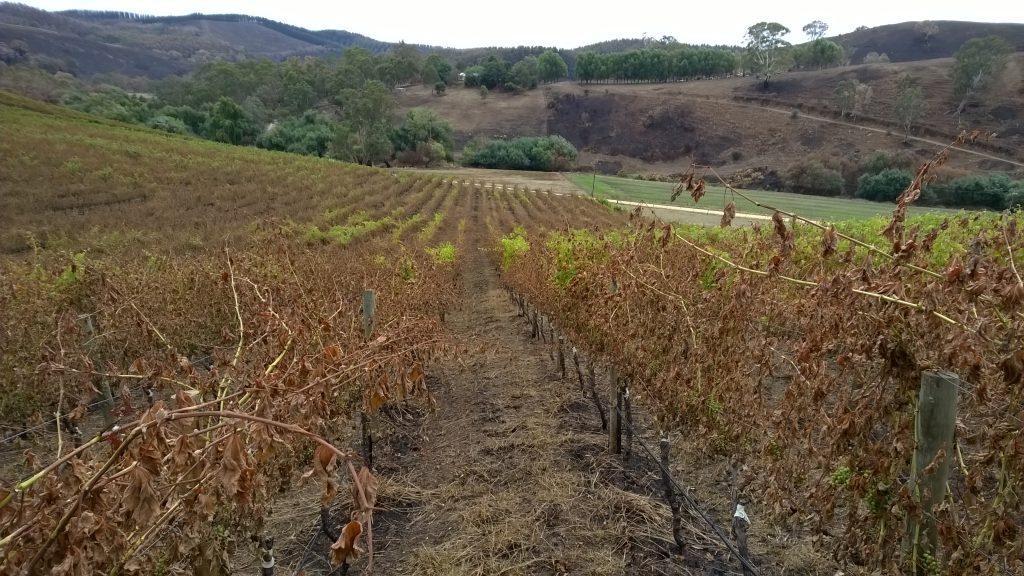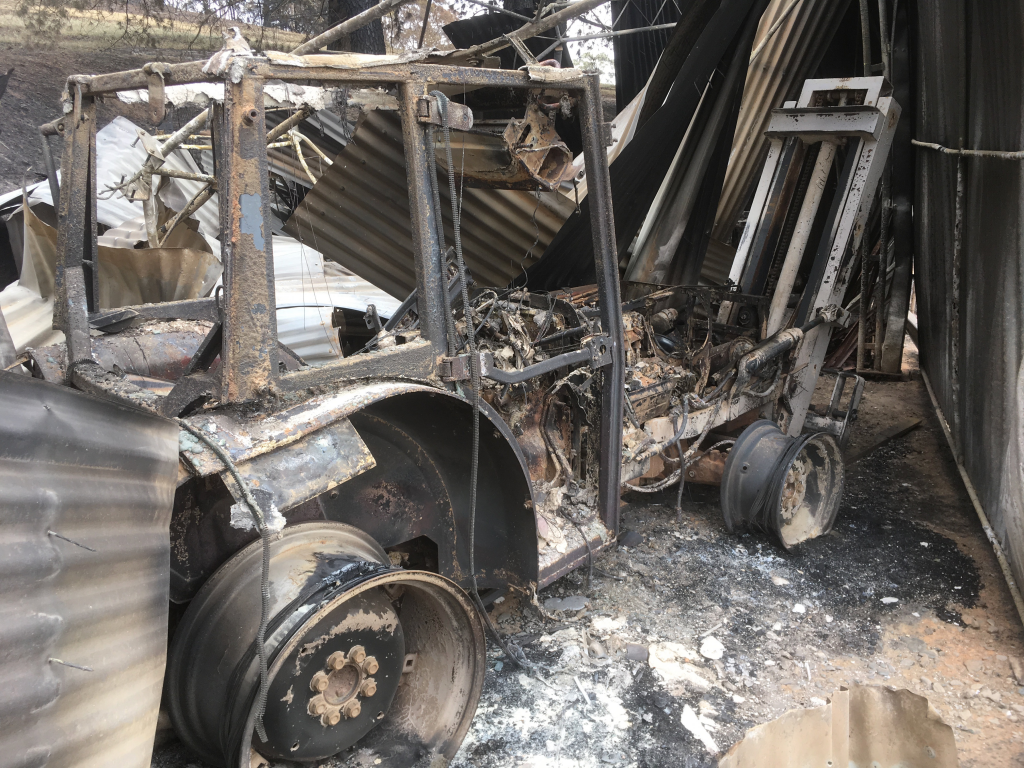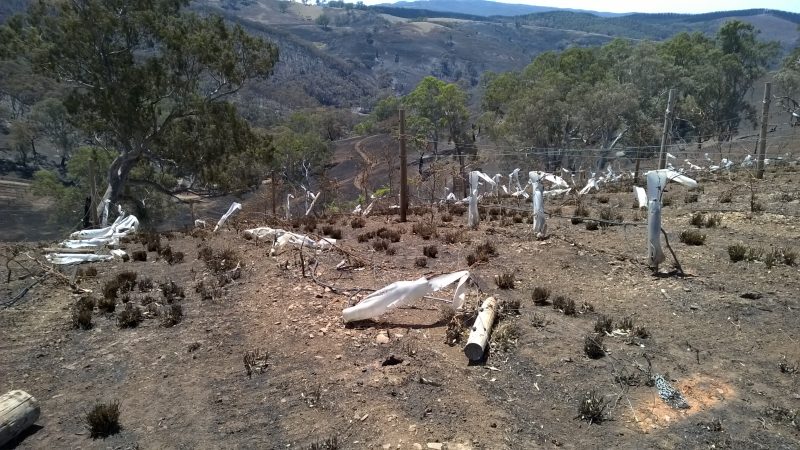By Samuel Squire
In 2015, the Sampson Flat bushfire devastated over 20,000 hectares of land in the northern reaches of the Adelaide Hills for seven days.
Among the mass of properties turned to ashes was Mt Bera Vineyards, north of Cudlee Creek.
Mt Bera Vineyards owner Greg Horner said of the damage to their vineyards, “In 2015, we lost almost everything. We were completely burnt out”.
“Following the fire, we learnt how to recover the vineyards and rebuild. This year I am sharing that knowledge to affected growers,” he continued.

Horner is talking with the region’s growers in community meetings to discuss how vine recovery following the Cudlee Creek bushfire, which ravaged sites like Henschke’s Lenswood vineyard, is possible.
He mentioned that vines, during times of extreme stress like bushfire, will exert enormous amounts of energy from their root systems and need somewhere for that energy to go.
“Vine roots exert a huge amount of energy during extreme weather to try and keep the vine healthy, they need somewhere for that energy to go, and beheading the vines for regrowth is the way to do that,” he said.
“Growers are constantly faced with commentary of all calibres following fire damage, but one of the rumours I am here to dispel, is the ‘burnt vines need to be completely ripped out and replaced’ myth. It’s not always the case.”

He commented that the damage is significant for the region and hopes what he learned from the 2015 blaze, and the vineyard recovery effort that followed it, will help growers recover this time around.
For Horner’s property, the Cudlee Creek fire didn’t get the chance to mark his vineyards like the Sampson Flat fire did five years ago.
“The back half of our property and everything south-ish has burnt, but unlike the Sampson Flat bushfire five years ago, the vineyards have been spared,” he said.
Of the recovery efforts that are underway already he said, “Understanding which portions need focusing on is the crucial and immediate action for recovery”.
“When vines are burnt, growers should quickly determine which need water/irrigating first. The younger vines need water first relatively quickly.
“From there, checking vine row infrastructure, determining which vines are beyond recovery and which need beheading for regrowth – not pulling out all of the vines – and understanding that you can get new shoots from the ground rather than replace the vine completely are the steps to take into consideration.”
Horner continued, “After all, the root system is where the shoots will come from. That’s what we did and it’s how our vineyard recovered”.
“My recommendation is that growers should not make instant assessments or pull anything out unless those vines aren’t needed anymore.
“I can’t say recovery will be an easy or difficult recovery process. It’s about infrastructure and damages circumstantial to each vineyard. But from my experiences, burnt vines can be beheaded and regrown from the roots under the soil.”
Horner has started documenting the Mt Bera recovery from the Sampson Flat bushfire of 2015 here.
The work-in-progress page will be continually updated until all necessary information from Horner is posted.
Images: Mt Bera Vineyards, Geoff Weaver Wines





















